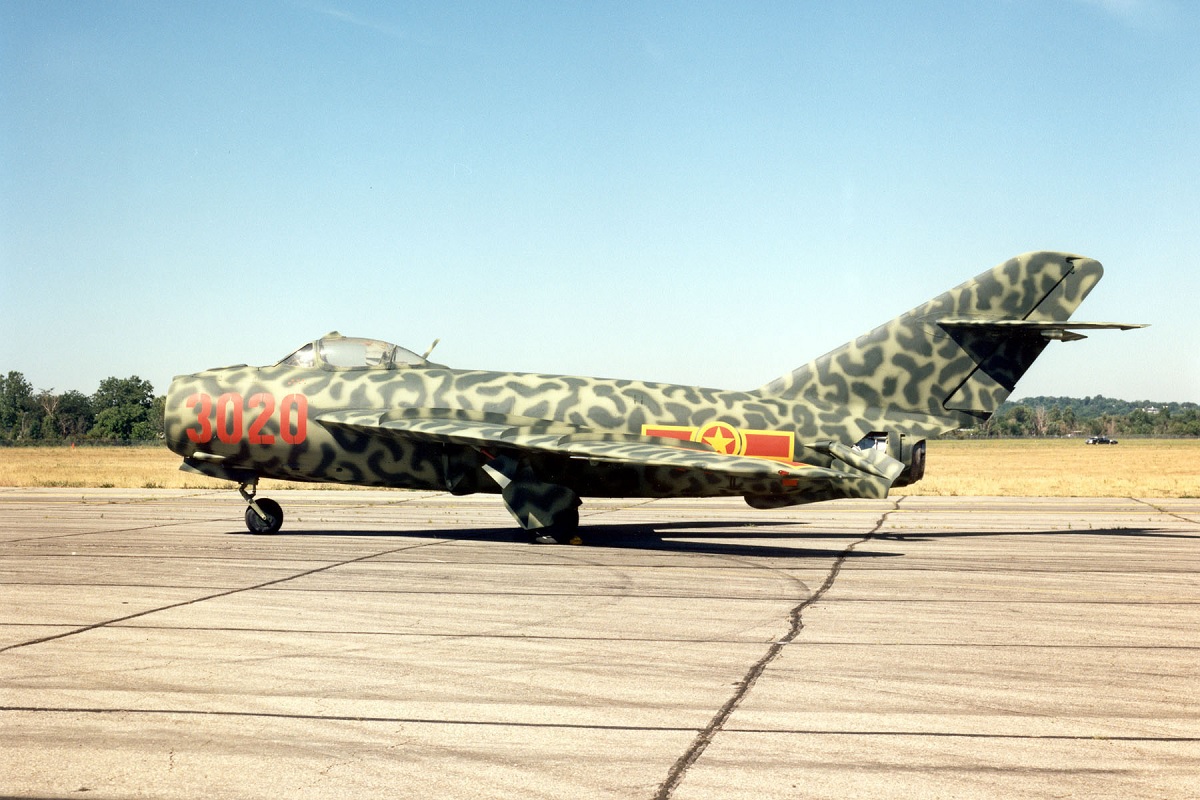Murphy and Fegan’s kill remained unsubstantiated for many years even if the Chinese claimed the destruction of the F-4 immediately following the fight because it was not deemed politically wise to counterclaim a MiG-17
On April 9, 1965, Lt. (j.g.) Terrence M. Murphy and his Radar Intercept Officer (RIO), Ens. Ronald J. Fegan of Fighter Squadron 96 (VF-96), shot down a Chinese MiG-17 while departing from the USS Ranger (CVA-61) in an F-4B Phantom II BuNo 151403, callsign “Showtime 602,” to claim the first recognized American aerial victory of the Vietnam War.

Three VF-96 crews were assigned to Barrier Combat Air Patrol (BARCAP) duty on April 9; this duty required them to fly a racetrack pattern over the water roughly 25 miles off the coast of Haiphong. The mission’s target, as stated by Peter E. Davies in his book Gray Ghosts, U.S. Navy and Marine Corps F-4 Phantoms, was to thwart hostile aircraft’s attempts to attack components of the 7th Fleet. Pairs of aircraft flew the circuit’s legs in roughly three minutes while cruising at a speed of around 300 kts and 20,000 feet. However, they frequently slowed down and gently steered towards the shoreline on the inshore side of the circuit to entice one or more MiGs to surface.
CDR Frazer was in charge of the BARCAP on April 9, and LT Don Watkins was his wingman. When their Phantom II experienced an engine failure on takeoff, LCDR Greer and his RIO LTJG Bruning were forced to eject and fly the third F-4B. Murphy and Fegan made their official debut in Showtime 602 as replacement section leaders under the guidance of LT Watkins and LTJG Mueller.
Watkins attempted to overtake Murphy while they were passing Chinese MiG-17s as they were flying north from Hainan Island, but Murphy heard him send “Three in contrails.” A fourth MiG-17 attacked Watkins’ F-4 from behind, according to Davies, and Murphy reported that he was being fired upon. After being called back from their BARCAP, Frazer and Don Watkins engaged the MiGs. When two AIM-7s were launched, the engine of one failed to ignite while the other went ballistic.
Additionally, two AIM-9s were fired, although only one connected, and the other was dodged. Murphy and Fegan went missing shortly after, and the three Phantom crews discovered this while they were making their way to the tanker. “Out of missiles,” had been their most recent transmission. Going back to base Watkins and Mueller, however, had witnessed a MiG-17 going down in a fiery crash after ejecting the other robbers. A second blip appeared behind Showtime 602 as it headed away from Hainan on the radar of the Fleet’s Combat Information Center (CIC), and the F-4 subsequently vanished from view.

Even if the Chinese had immediately after the combat claimed the loss of the F-4, it was not seen as politically wise to claim a MiG-17 in response, and Murphy’s kill remained unconfirmed. Additionally, according to some Chinese reports, one of the Phantoms’ inaccurate missiles is what brought Murphy and Fegan down.
The destruction of the Chinese MiG was handed to Murphy and Fegan after the air war, while they were piecing together the events.
This engagement, however, quickly brought to light issues that would continue throughout the Vietnam War. According to Davies, these problems were:
- Poor missile performance. None of the four missiles fired hit their intended target.
- With the MiGs moving at a moderate speed, Murphy and Fegan attempted to turn. They lost when their Phantom ran out of energy during the turn, making them maybe the first of many to learn that this maneuver could be lethal in an F-4.
- Communication difficulties. Frazer’s and Murphy’s, the two aircraft in the air fight, were using various radio frequencies and different radar controllers. Only after the MiGs had indicated that they intended to attack and had dropped their wing tanks were they permitted to engage in combat. The mutual effects of the two portions may have been compromised if each F-4 had only one primary radio.
Overall, the only solace was the knowledge that Murphy and Fegan’s deaths would have been VF-96’s only casualty to enemy aircraft during wartime.
Gray Ghosts, U.S. Navy and Marine Corps F-4 Phantoms is published by Schiffer Publishing and is available to order here.
Photo by U.S. Navy and U.S. Air Force

